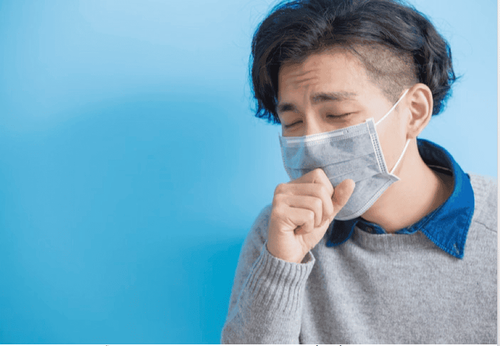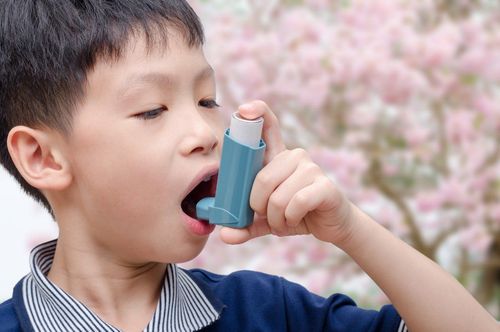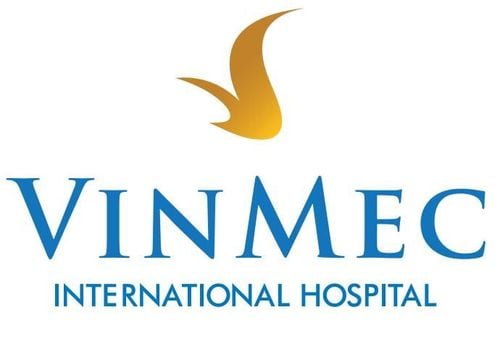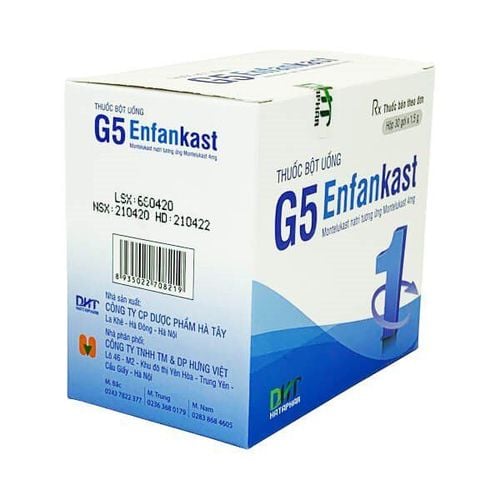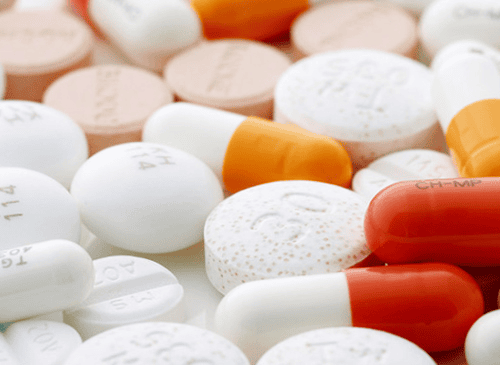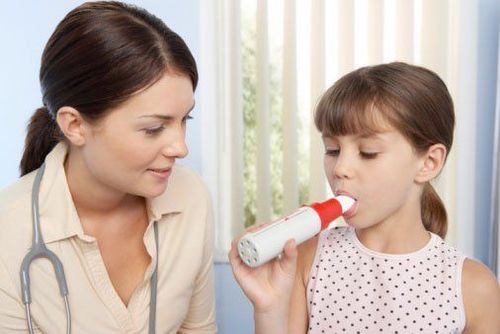This is an automatically translated article.
The article is professionally consulted by Master, Doctor Dang Huy Toan - Pediatrician - Neonatologist - Department of Pediatrics - Neonatology - Vinmec Nha Trang International General Hospital.
Asthma in children is a common upper respiratory tract disease with symptoms such as coughing, wheezing and difficulty breathing. Once a child has been diagnosed with this condition, he or she needs to be on a plan with both reliever and preventive medicine. At the same time, children need to avoid triggers because they can trigger a serious asthma attack at any time.
1. What is childhood asthma?
Childhood asthma that occurs during childhood is when a child's lungs and airways become inflamed, secreted, and constricted when exposed to certain triggers, such as inhaling pollen or catching a cold. or other respiratory infection. Consequences of asthma in children can cause uncomfortable daily symptoms, interfere with children's activities, play, study, sleep, and development.Asthma in children has a general pathogenesis that is not different from asthma in adults. However, a child's respiratory system has to suffer damage even before it is fully developed. This condition is one of the leading causes of emergency medical visits, hospitalizations, and delays in school attendance. In some children, if asthma is not managed with a strict childhood asthma regimen, relief is not effective, this condition can cause dangerous asthma attacks, sometimes affect life.
There is a large percentage of childhood asthma that is incurable and symptoms may continue into adulthood. However, if a system is built with the right asthma treatments in the right way, children can control symptoms well, prevent lung damage and can develop to the fullest.
2. What are the symptoms of asthma in children?
Common asthma signs and symptoms in children include:Cough is frequent and worsens when the child has a viral infection, occurs while the child is sleeping or is triggered by vigorous exercise, cold air... Shortness of breath or wheezing sound when exhaling Short of breath Shortness of breath Chest tightness or children complaining of chest pain Malnutrition, growth retardation Fatigue due to lack of sleep. The above signs and symptoms of asthma in children can vary from child to child and may get worse or better over time. Between asthma attacks, children can be completely normal, so this diagnosis is easy to miss and asthma medicine is not prescribed for children to prevent.

Khó thở, hụt hơi, thở rít thường là những biểu hiện thường thấy ở trẻ bị hen suyễn
3. What are the causes of asthma in children?
Asthma in children is still not fully understood. Some factors thought to be involved include:Inheritance of genetic allergies Parents with asthma Having certain types of airway infections at a very young age Exposure to environmental factors , such as cigarette smoke or air pollution There is an increased sensitivity of the immune system that makes the lungs and airways more susceptible to inflammation, constriction, and mucus secretion when exposed to certain triggers. Factors that have been observed to trigger asthma attacks in children are:
Viral infections such as the common cold Exposure to air pollutants, such as cigarette smoke Allergy to dust mites, feathers pets, pollen or mold Body movement Change in weather or cold air. However, sometimes symptoms of an asthma attack occur without an obvious trigger. Also, if these triggers occur in children with one of the following risk factors, they are more likely to trigger an asthma attack than other children:
Exposure to secondhand smoke, including before birth previous allergic reactions, including skin reactions, food allergies or hay fever, allergic rhinitis Family history of asthma or allergies Living in a highly polluted area Obesity Pre-existing breathing problems respiratory infections such as rhinitis, sinusitis or pneumonia Heartburn is present in gastroesophageal reflux disease.
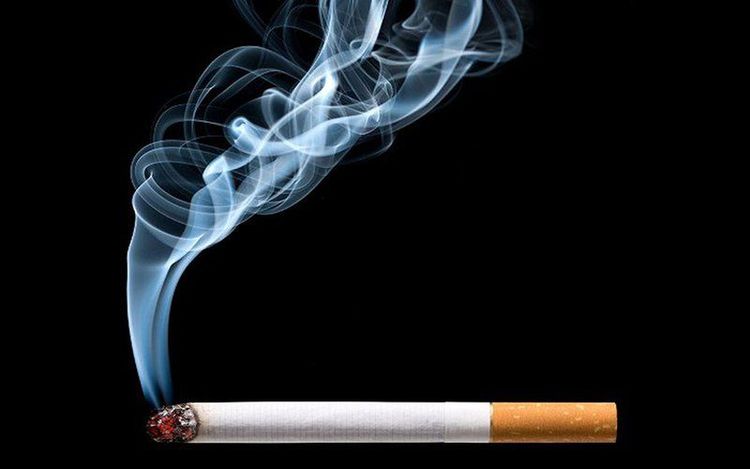
Việc tiếp xúc nhiều với khói thuốc lá có thể làm tăng nguy cơ hen suyễn ở trẻ em
4. How to use medicine and manage asthma in children?
Because this is a chronic disease of the respiratory tract with acute attacks, the treatment of asthma in children is not only asthma reliever for children, but also includes preventive medicine. Accordingly, it is very important to make a definitive diagnosis of this pathology at the outset.At the same time, sometimes the symptoms of asthma in children are not specific, can also be mistaken for other respiratory diseases, the appointment of asthma medicine for children needs to be cautious and the treatment attitude should depend on the patient's condition. Monitor disease progression, especially when the child has just been diagnosed with an asthma attack.
For infants with wheezing until they are still under 12 months of age, treatment is not the same as treatment for asthma in children. Because wheezing in this age group is very common, the cause may be acute bronchitis caused by a virus or because the airways in children are still small and soft. Treatment at this time is only nebulizing the child with a short-acting beta 2 agonist, systemic corticosteroids or inhaled corticosteroids for children younger than 12 months. If a child has severe wheezing that requires hospitalization or occurs as frequently as more than once every 6 weeks, the child should begin to be considered for the diagnosis of infant asthma and the appointment of preventive medications.
When a child is 1 to 5 years old, a child can still have a cough and wheeze with a viral respiratory infection even if they don't have asthma at all. Salbutamol should still be used to relieve symptoms during this acute phase.
Only if the child still has frequent cough, wheezing, shortness of breath, chest tightness, especially when there are triggers and the child is 6 years of age or older, the diagnosis of asthma in the child can begin to return. should be more certain. At this time, the general principle of asthma treatment in children should be set out to aim at good control of asthma symptoms, minimizing the frequency and severity of attacks.
In addition, it is important to identify factors that trigger asthma symptoms, such as allergens, to protect children from acute asthma attacks. At the same time, children also need to be guided to inhale and spray asthma relievers for children and always carry them with them. Finally, parents should take their children to get an annual flu shot, build a healthy living environment, eat well, do appropriate physical activity and be ready for resistance to the immune system.
5. Can asthma in children cause complications?
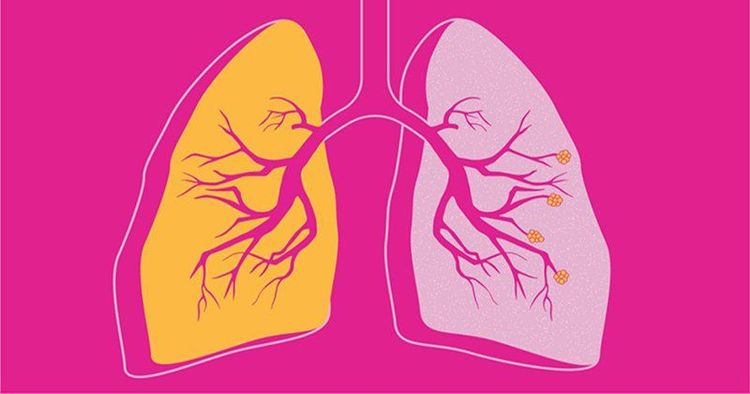
Hen suyễn ở mức độ nặng có thể gây tình trạng suy giảm chức năng phổi vĩnh viễn
Severe asthma attacks requiring urgent treatment or hospital care Permanent decline in lung function Mental and physical retardation Interruption of schooling Limiting activities, activities and play In summary, asthma in children needs is recognized as a chronic disease to actively use medication and manage asthma in children. When asthma medicine for children is adequate between asthma reliever and preventive medicine, away from the triggering factors, children have the opportunity to develop as comprehensively and balanced as their peers.
Respiratory - Allergy and Clinical Immunology Unit at Vinmec Times City International Hospital was established and expanded with the desire to provide professional services with high expertise for medical examination and treatment. respiratory, allergic and autoimmune diseases.
Unit brings together professors, doctors and specialists with more than 30 years of experience, well-trained young doctors in advanced countries who are always ready in the work of examining and taking care of people. sick. In addition, the Unit is equipped with the most modern equipment and machinery in Vietnam to support the diagnosis and treatment of diseases.
Especially, for patients with bronchial asthma, patients are measured FeNO to support early diagnosis of asthma, especially in children. This is an effective monitoring tool for asthma management, treatment, and prognosis of acute asthma attacks (only address in the North). In addition, with the desire to work with you to control asthma, the Asthma Club is opened regularly to supplement knowledge, help patients exchange knowledge with leading experts in Vietnam and the world about asthma. asthma. Currently, the Unit has professional cooperation and scientific research with hospitals and universities in Australia, the United States and France.
Respiratory unit - Clinical immuno-allergy is currently becoming a reliable examination address for many customers because when coming to the clinic, the patient will be examined and thoroughly consulted by the doctor about the disease and treatment plan. Patients are also provided with comprehensive supplemental information about the disease.
Please dial HOTLINE for more information or register for an appointment HERE. Download MyVinmec app to make appointments faster and to manage your bookings easily.




